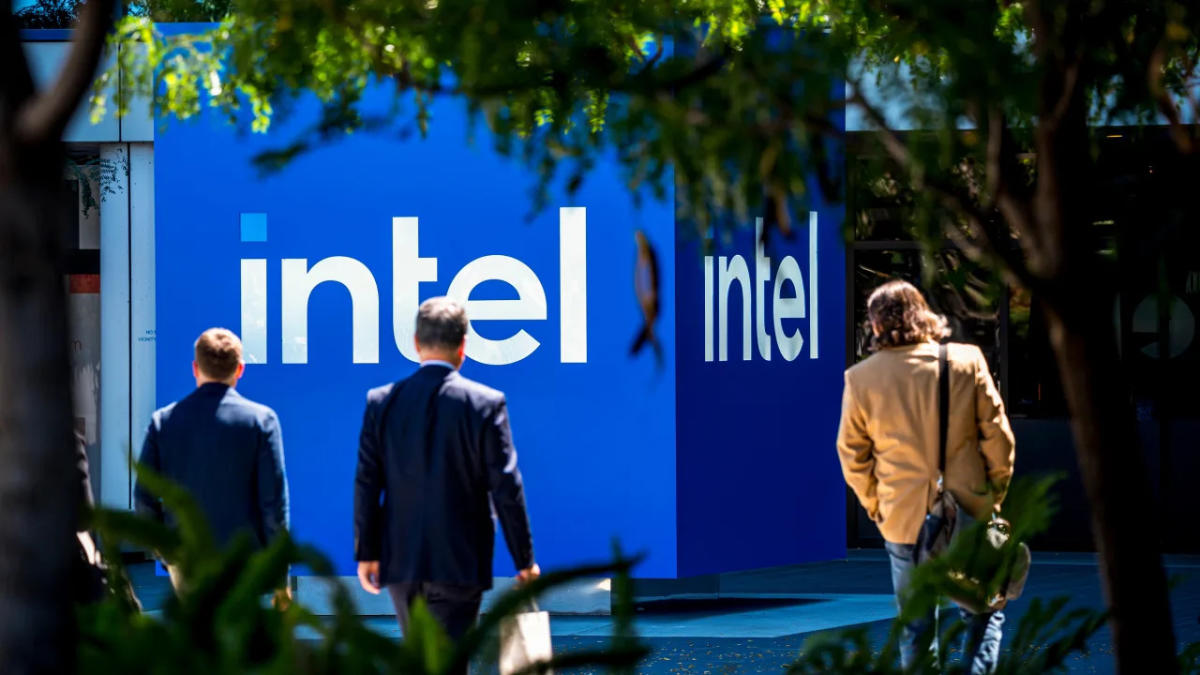Intel is in trouble. Here are 5 things tech companies can learn to avoid the same struggles

For nearly 30 years, Intel was the world’s biggest chipmaker. A decade ago, things began to shift, though—and these days, the company’s very future is at a crossroads.
Most Read from Fast Company
Financials for the past two quarters have fallen far, far short of expectations. In the most recent quarter, Intel reported earnings of just 2 cents per share, versus an expected 10 cents, and the company suspended its dividend. Now, after shedding more than 15% of its workforce, Intel is looking at how best to continue.
A three-day series of meetings began Tuesday with Intel’s board of directors beginning to explore options on how to move forward—something that could result in additional layoffs, the sale of subsidiaries, or even, perhaps, splitting up Intel’s core operations.
What started as a slow-motion fall from grace has become one that moves at lightning speed. But as Intel works to course correct, there are lessons other tech companies can learn from its problems.
Capital is king
Intel at one point saw cash flow of $10 billion (or more) per year. By 2022, though, that had turned negative, and it has only gotten worse over the past two years. That downward spiral of cash flow has hamstrung the company’s ability to fund its core operations.
Capital spending and risk go hand in hand—and Intel made some gambles chasing AI chips, including investing $100 billion in U.S. manufacturing and introducing laptop chips with dedicated AI processors. The company, however, was too far behind to make any sort of notable impact, which cost it time and money. And any payoff from that is far from imminent.
There’s a difference between spending money now to earn a lot more later and just burning cash. And leaders need to have the presence of mind to realize when they’ve switched from one of those scenarios to another.
Know when to pivot
Changing course can be humbling. It signals to both investors and employees that you made a mistake. But failing to do so can be fatal. Intel is making some money from its existing businesses, but not enough to support the capital outlay needed to expand its manufacturing and supply chain. The company’s failure to enact a new plan earlier likely cost it billions.
“While the overall strategy might have made sense at the outset, the current runway of the business doesn’t seem to give enough support to get it to the end anymore,’’ Bernstein Societe Generale Group analyst Stacy Rasgon wrote in a note last week.
Intel has been slow to pivot before. The company failed to see changes in consumer demand that started to happen in the late 2000s. Rather than focusing on the rise in demand for mobile chips, it stayed laser focused on the PC business (and the profits that segment was contributing to the bottom line at the time). It also insisted on making its own processors while rivals outsourced the work. More recently, Intel completely missed the rise of AI-focused chips, giving Nvidia a chance to pull far ahead.
“If you have a linear way of thinking, you think ‘what I’m doing, I’m going to continue to do,’ but technology has a way of changing those things,” Ram Chellappa, a professor at Emory University’s Goizueta School of Business, tells Fast Company.
Staying ahead of the curve is hard, but catching up is a lot harder
Intel CEO Pat Gelsinger is under the microscope these days, but virtually no one blames him for all of the company’s current problems. He joined Intel in 2021, hoping to get the company back on track after previous management’s missteps. Getting Intel back to a level of prominence is taking longer and costing a lot more than expected, however—and R&D costs are just going to climb higher as it plays catch-up.
“This is not the safe space they had before, and those things are being reflected in the financials,” says Chellappa.
Once lost, investor confidence is almost impossible to regain
Intel’s problems have cascaded in the past several quarters, but the warning signs have been there for a while—and investors have seen them. Over the past five years, shares are down 63%. Over the past year, they have fallen 50% and year-to-date, the company’s stock is down nearly 60%.
The Dow Jones Industrial Average is even thinking about removing the company from its index. Investors, meanwhile, now value the company far less than the value of its facilities and other assets on its balance sheet.
Job cuts and turnaround plans will help to some degree, but until Intel shows it can be a real player in the AI space or introduces a product that will play a significant role in future technologies, it will be hard to woo back investors who have walked away.
When under a microscope, don’t tout a product until you’re positive it’s ready
One of Intel’s hopes for the future has been turning the company into a fabless design studio, which it hoped would lure away business from Taiwan’s TSMC. Those efforts hit a roadblock earlier this month, though, after chip designer Broadcom tested Intel’s process and said Intel was not yet ready for large-scale production.
Intel says the system will be ready by next year, but the setback could have long-lasting effects as trust in Intel’s manufacturing sinks.
This post originally appeared at fastcompany.com
Subscribe to get the Fast Company newsletter: http://fastcompany.com/newsletters
Breaking news
See all






